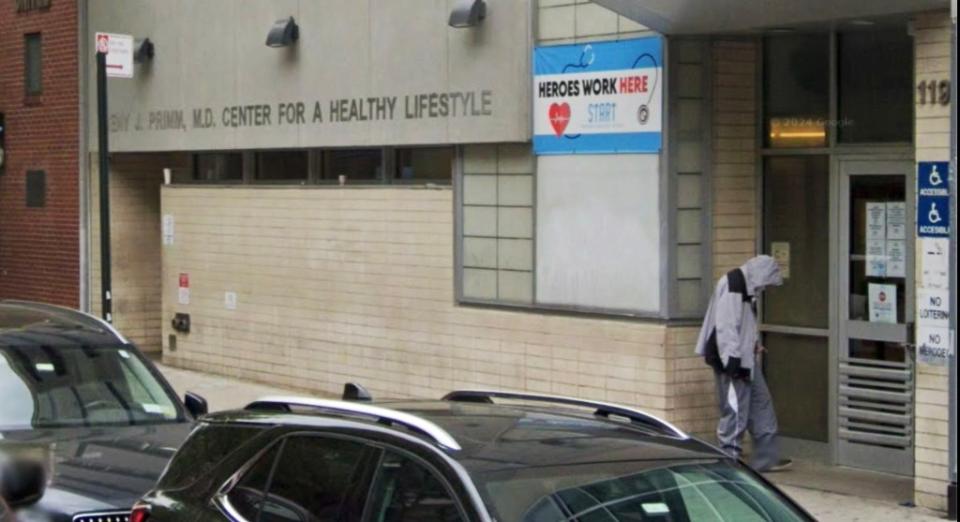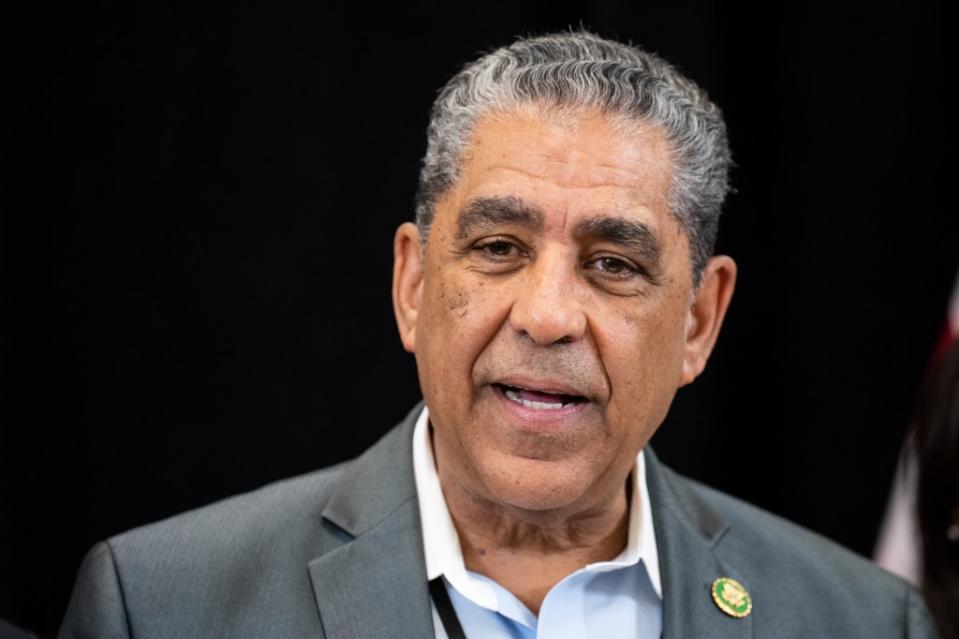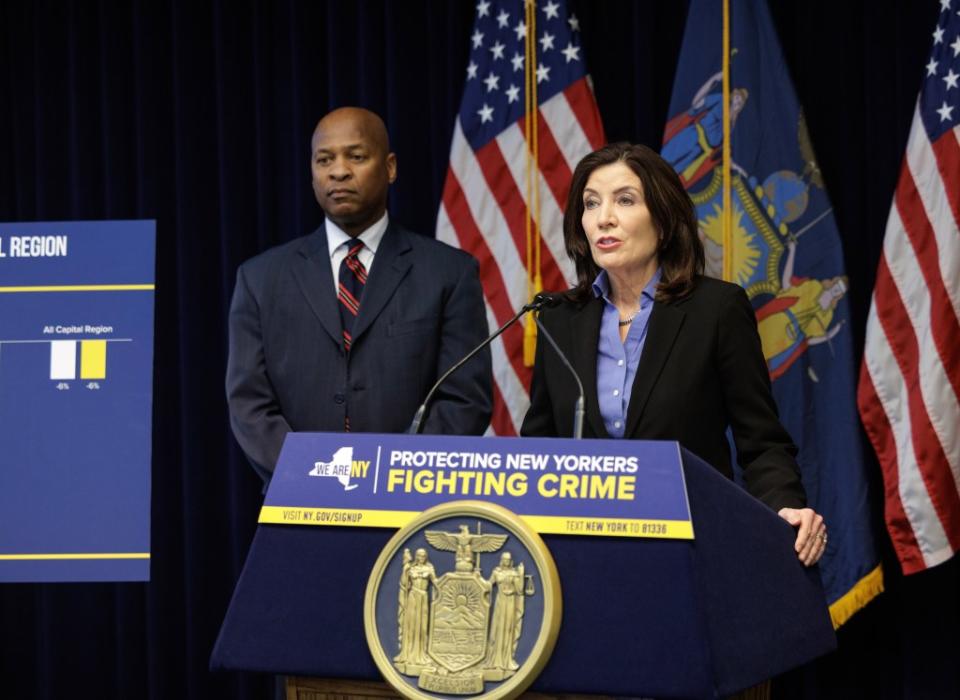Hochul administration is flooding Harlem with drug treatment clinics, Dem congressman complains: ‘Bad planning’

- Oops!Something went wrong.Please try again later.
- Oops!Something went wrong.Please try again later.
Gov. Kathy Hochul’s administration is oversaturating Harlem with drug treatment facilities — and it’s got to stop, fed up Congressman Adriano Espaillat (D-13) said.
“It’s too much for the community. It’s totally out of control,” Espaillat told The Post.
There are currently 13 such clinics — many running along or near the spine of 125th Street — with 75% to 80% of patients coming from outside of Harlem, the congressman said.

The high concentration of treatment clinics serving addicts is also attracting more drug dealers to the neighborhood, claimed Espaillat.
For the mess he blames the state Office of Addiction Services and Supports, which licenses and approves drug treatment programs. Hochul oversees the agency.
“It’s bad planning,” Espaillat said. “OASAS has been horrible.”
He said he’s personally discussed the problem with the governor, but that the status quo is untenable.
Espaillat said merchant groups like the 125th Business Improvement District are furious and described the abundance of drug treatment clinics in a single corridor a form of “redlining.” The merchants, feeling under siege, even objected to opening a legal pot store across from the Apollo Theater.

According to a list provided by the congressman’s office, the locations of just some of the addiction centers include:
119 W. 124th Street
103 East 125th Street
132 W. 125th Street
2406 Amsterdam Avenue
2191 Third Avenue
2367-69 Second Avenue
“I have long expressed my concerns and am deeply troubled by the number of OASAS clinics and their placement in my district,” said Espaillat. “There is an undeniably disproportionate amount of methadone treatment clinics in communities in my district compared to the residents who need it.
“This disparity results in nearly an 80% increase of treatment-seekers from outside of our communities to commute to Harlem and East Harlem for these services, a pattern which has subsequently created an increase in the drug dealers in the surrounding area as well as an increase in drug use and overdoses in our communities,” he continued.
He said he has urged OASAS to relocate some of the drug treatment clinics so they are distributed more equitably across the city “as opposed to the current oversaturation in predominantly African American and Latino neighborhoods,” he said.
Espaillat noted that northern Manhattan is shouldering more than its share of responsibility in helping addicts get their lives back on track.
His district includes two controversial “safe” drug injection sites — where addicts can bring their own drugs and are provided with clean needles to shoot up under the watch of medical professionals. A report by The Post revealed that drug dealers sold narcotics to patients at the injection sites.
The fentanyl crisis has only worsened the situation, the congressman said.
“I’ve seen people shooting up drugs between cars,” he said.
The Post previously reported about a legion of drug-addicted zombies roaming East Harlem and transforming parts of the neighborhood into lawless, open-air shooting galleries.
The congressman knows the damage that open drug use can cause a community, having battled the crack epidemic that infected Washington Heights in the 1980s and early 1990s.

OASAS defended its actions Sunday following Espaillat’s criticism.
“OASAS does not select sites to place treatment facilities, but rather certifies the applications submitted from community-based providers to deliver services at a given location based on a demonstration of need,” said agency spokesman Evan Frost.
He said the decision on where to place treatment facilities follows a multi-level that includes input from New York City. .
More than half of the providers offering treatment services in Harlem have been in operation prior to 1988, including several that began operations in the 1970s, Frost said.
“It is also important to note that there is a large concentration of hospital facilities in Harlem that provide comprehensive health care, including services for those affected by addiction,” the OASAS rep said.
“Many people travel to these facilities for addiction care in the same way that others would to be treated for chronic illnesses like cancer or heart disease. There are no geographic restrictions as to where someone can go to receive treatment.”
Mt. Sinai Hospital and Metropolitan Hospital, part of the city public NYC Health + Hospitals system, run some of the clinics.
“Last year, Governor Hochul along with Congressman Espaillat announced action designed to improve the way treatment is provided in the Harlem neighborhood, and we remain committed to supporting both the local community, and individuals in need of this lifesaving treatment,” the OASAS rep said.

